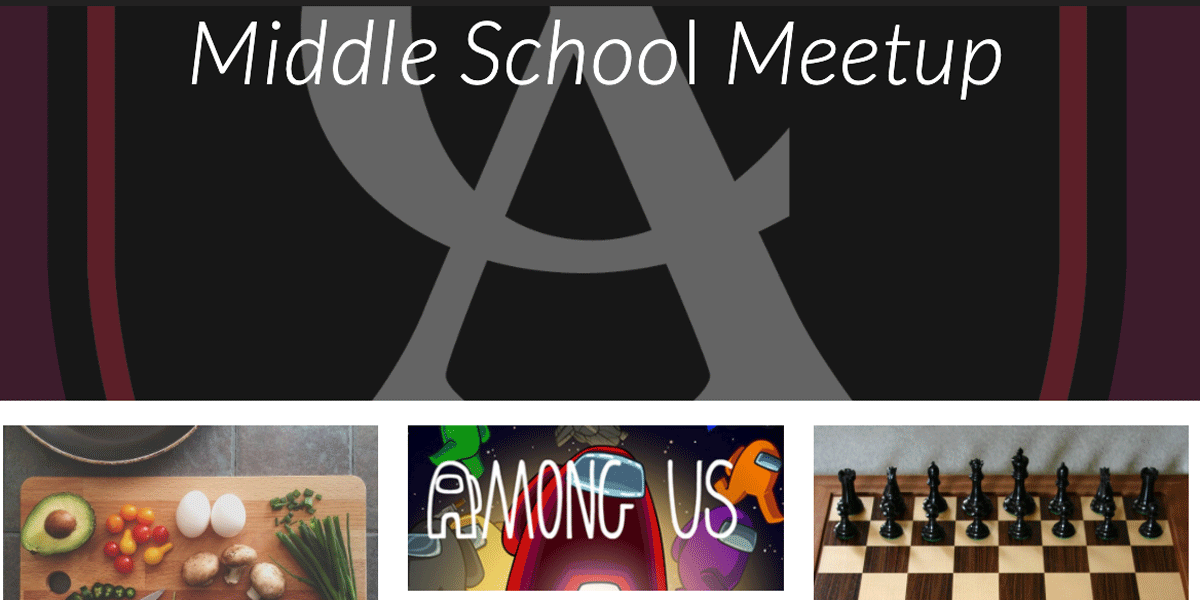
COVID-19 has disrupted daily life, long-term plans, and social interactions around the world, so it didn’t come as much of a surprise when the students in Liz Estacio’s Seventh Grade Critical and Creative Thinking course started talking about how they felt disconnected from friends and classmates. During periods when Colorado Academy was on 100 percent remote learning, they saw each other only on Zoom. When CA transitioned to a hybrid model, students saw only half their class in person.

“During COVID, people have been having a hard time meeting new people,” says Seventh Grader Willa Wang. “You don’t see half your grade, so it felt like it was important to have a place where CA Middle School students could meet up and chat.”
Estacio turned a pandemic problem into a learning exercise by challenging her students to use the skills they were practicing in their class. Critical and Creative Thinking teaches and practices Colorado Academy’s 6 Cs: character, collaboration, creativity, communication, critical thinking, and cultural competence, by engaging students in a series of challenges. In addition to the 6 Cs, the course includes these topics:
- Innovator’s mindset
- Debate skills
- Design-thinking process and protocols
- Performance tasks
- Social Justice
“The students identified the problem, talked about it, and then initiated a Design Thinking project to address the issue,” says Estacio. “I was super excited to watch them, because they handled this so maturely. They saw that they could do something to make a difference, and you could tell they felt so empowered.”
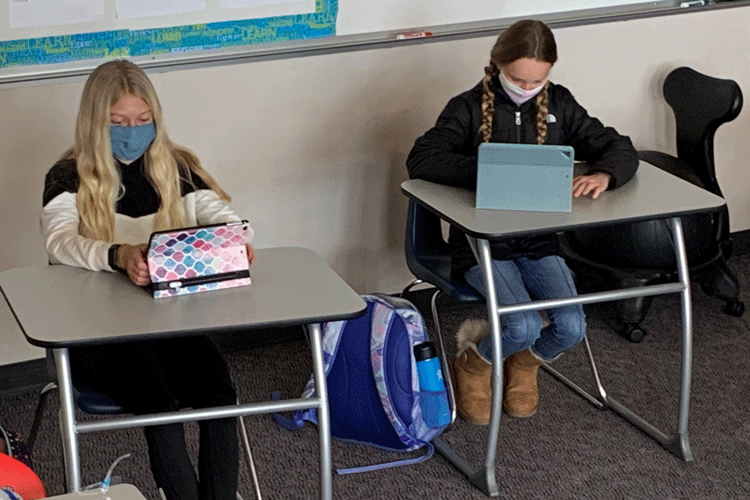
‘They didn’t know what they could do’
The first step the Seventh Grade students took was to brainstorm and design a peer-to-peer survey of the social and emotional health of students in the Middle School. They fine-tuned the survey until they had narrowed it down to just a few questions, some of which required a longer written answer:
- How connected do you feel to your classmates this year?
- How are you connecting with people from our school?
- How has online school impacted your social life?
They also polled students on what kind of clubs they might be interested in: Chess Club, Book Club, Movie Club, Arts and Crafts, Foodies/Cooking Club, Among Us Club, Authors Club, Duo Lingo League.
“When the results of the survey came in, the students analyzed and debated the data,” Estacio says. “They had to decide what were the most important needs, and what they could do about them.”

The students concluded that there were two needs: Middle School students should be able to join a club virtually, and they should be able to talk with each other in a social way about their feelings outside of the confines of a Zoom class meeting. Estacio suggested to the students that one way to meet those needs would be through a website.
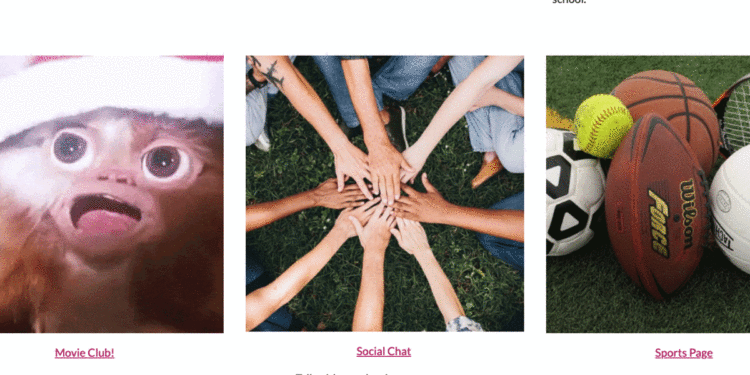
“Their reaction was, ‘We can’t do a website!’” Estacio says, laughing. “They didn’t know what they could do.”
‘I didn’t know how good it could look’
What followed for the students was a process of intense discovery, summed up candidly by Willa: “We didn’t exactly know what we were doing.” But quickly, the students divided the labor based on their interests and skills.
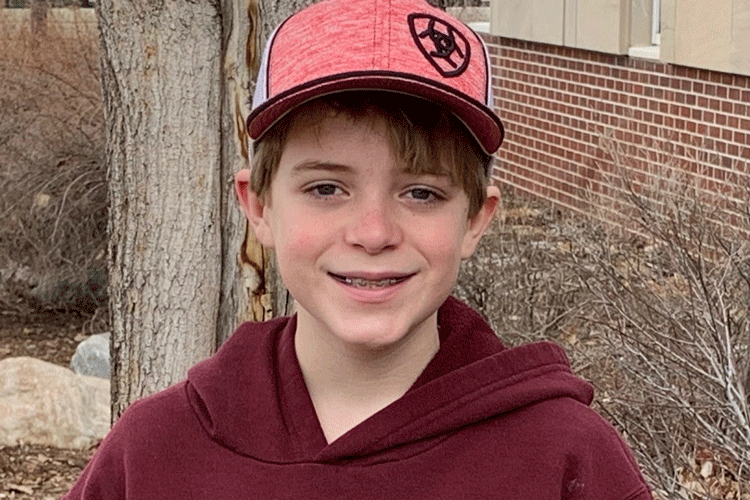
Seventh Grader William Arney took over the technical development, working with a team of students he assembled. They decided to build the site on Google sites. “I had never used Google sites,” William says. “I didn’t know how good it could look.”
William’s team built a page with visuals and links to a variety of clubs, which the class chose based on the survey results. From the site, students could sign up to join and meet with fellow students in the Movies Club, the Foodies Club, the Chess Club, the Sports page, and a club where students interact with other students who want to play the popular “Among Us” online game. They also created the GSA Club, the Gender Sexuality Alliance, to support diversity among students and the “Good News Page,” to collect positive news from around the world.
Willa took over the design of the social interaction page of the site. “I am the worst at technology!” she says. “I was surprised that I could learn to navigate the technology to build the site.” The social interaction page offers students the opportunity to give each other advice about how to handle issues presented by COVID-19 safety protocols and to express gratitude for positive experiences this year. Willa ensured that it is moderated in real time by Estacio, who approves every message before it is posted.
After much debate, Estacio’s class named their site, “Middle School Meetup.”
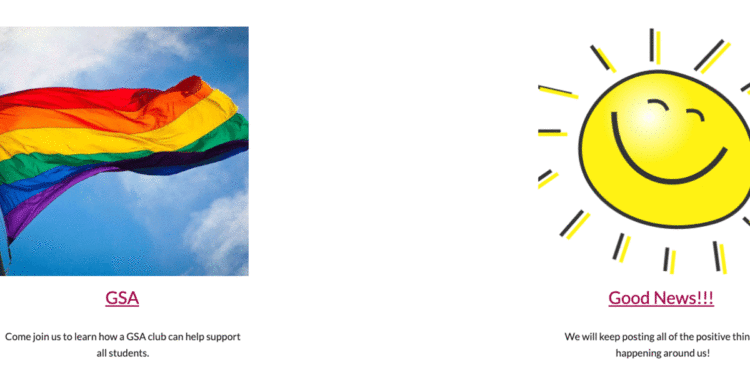
‘It’s created a feeling of hope’
To support the students and ensure the site would look professional, Estacio brought in Jennie Kies, who is a Computer Science and Engineering teacher as well as a tech specialist. She oversaw security, ensuring that only students with CA email credentials could get access to the site. She was impressed by what the students had achieved. “My first reaction was, ‘Yay, awesome!’” she says. “It’s a thoughtful site, it’s inclusive, and it offers a way to reach out and communicate.”
The students presented their website to the rest of the Middle School at a January Town Hall, launching a pandemic silver lining story. Estacio says that her class would never have tackled this project if students had not been motivated by COVID-19. Born out of adversity, “Middle School Meetup” proved to teach a broad range of lessons.
“It feels like I accomplished something,” William says. “It’s created a feeling of hope that people will have resources to connect with each other,” adds Willa.
“This project proved to be a way for students to take control during the pandemic by creating a resource for students, done by students,” Estacio says. “To me, that’s the best part of it. We took a tough situation, and we made it into a learning moment that students can take with them for the rest of their lives.”
